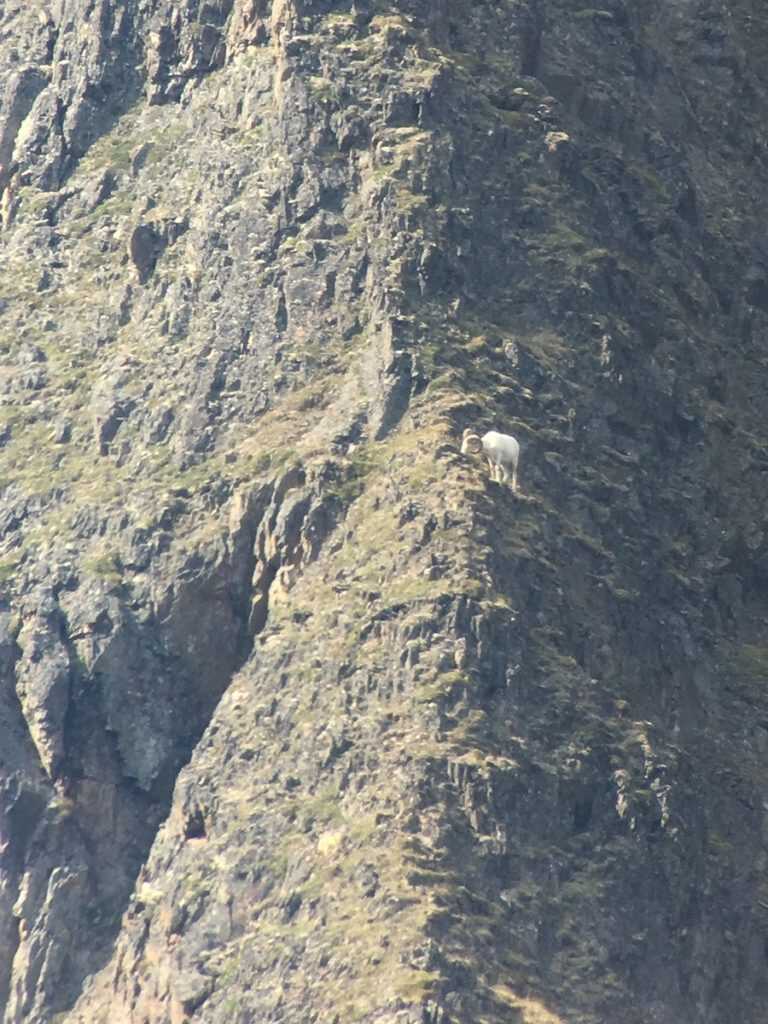
Sheep Hunting Prep Ideas Pt. 1
Known for their awe-inspiring and challenging habitat, sheep are becoming increasingly popular to hunt so maximizing one’s opportunity if given the chance to pursue them is key. In part one of this series, I touched on the necessity of shooting an intimately-known firearm and beginning well-ahead of season. I also wrote about the importance of developing a tough mental attitude and using that to drive the physical preparation for a sheep hunt.
With that in mind, on to tools for the job.
In Your Camp
In whatever country, state or territory you find yourself chasing Ovis, your base camp should include some necessary equipment. While some hunts are based out of lodges or cabins, this article’s purpose is to address lightweight backpacking-style camps. For redundancy’s sake-buy the best gear you can afford in all categories, there’s too much invested in a sheep hunt to let sub-par gear get in the way. But make sure you leave enough in the kitty for a taxidermy bill!

Sleeping- Quality rest is of utmost importance when hunting hard for any species so I spend an inordinate amount of time looking at and trying new pads. There are many choices for length and insulation value, when in doubt I go warmer.
The same goes for sleeping bags; while I used only synthetic bags for years, I’ve gone to a treated down bag and haven’t had any issues despite it taking it’s fair share of abuse. A good sleeping bag is a significant investment so I err on the side of universal use and buy colder than I need, after sheep season I can take it home and use it for late-season elk hunting.
A blow-up pillow weighs mere ounces and covered with a clean shirt, makes for a welcome addition.
Regardless, if it’s unproven gear I follow the old idiom: an ounce of prevention is worth a pound of cure. A one or two night trip before season to “test run” equipment has turned up problems on two occasions (a zipper blowout on a sleeping bag and a leaky backpacking stove fitting) that could have made the upcoming hunt much less pleasant.
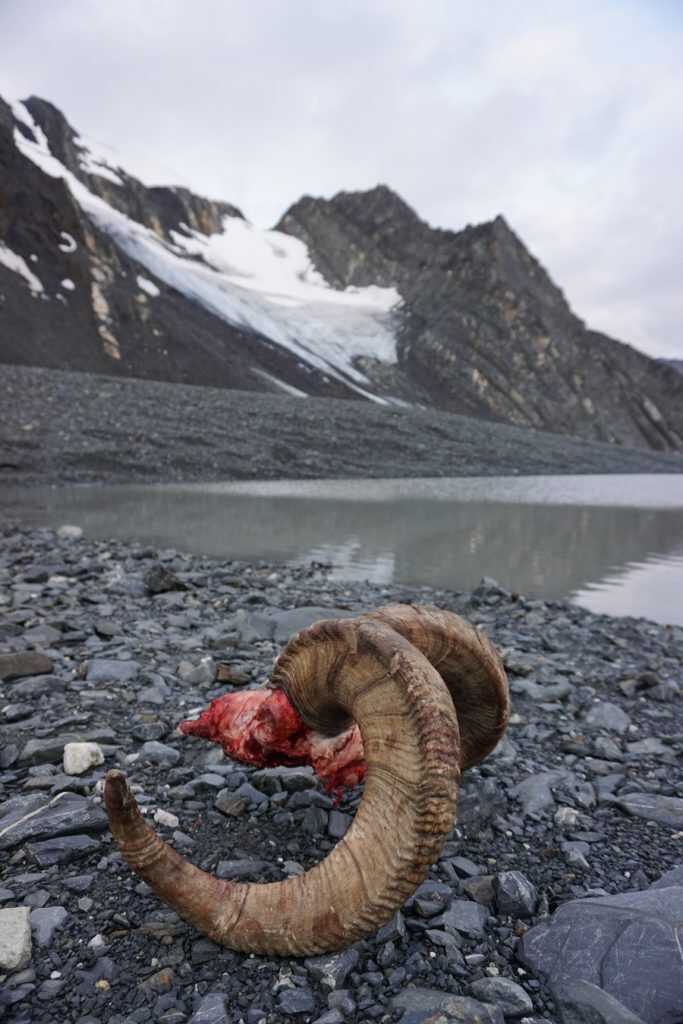
Lounging- Weather days at camp can be blessings in disguise, especially if you’ve been pounding the mountains for the better part of a week. Give those quads a rest and put on some Crocs; the rubber shoes are good for airing out feet as well as makeshift wading shoes if the need arises.
I like to bring a book and journal and catch up on rain or fog days; it’s surprising how many things are forgotten until going back through old water-marked notes months or years later. I’ve only got so many sheep hunts in these legs and want to remember as many of them as I can when I can’t climb the ridges anymore.
Ear plugs- self-explanatory, we’ve all got that one guy in camp.
My other guilty pleasure is a clean base layer and socks for sleeping, as they keep my bag less aromatic after several days in the field and it feels better to get into reasonably clean clothes in the tent.
Dry bags- I’ll leave a dry bag in my tent and put my sleeping bag in it before leaving for the day. That way if my tent or fly gets compromised while I’m out hunting, my main source of heat is still moisture-free. It may not always be necessary but it could be life-saving on hunts above timberline where there’s no firewood to burn.
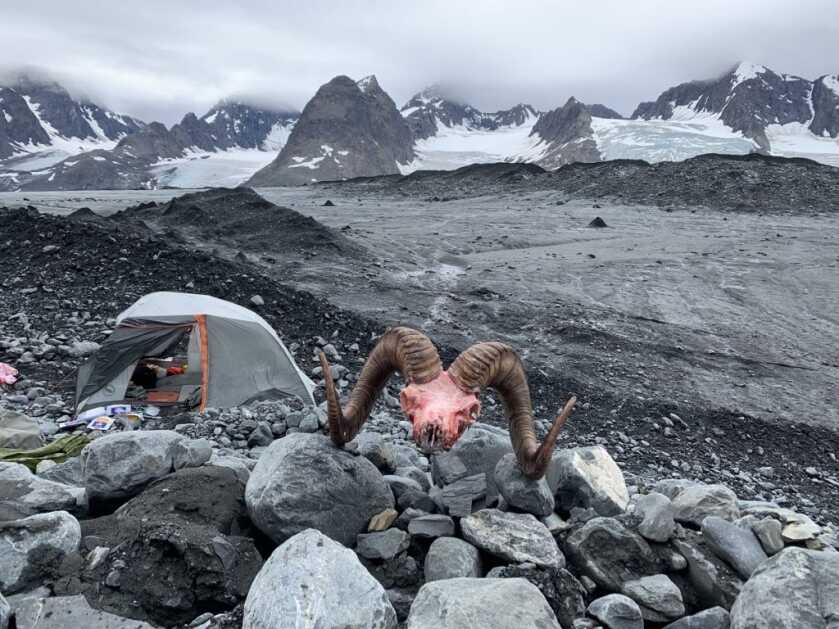
In/On Your Pack
Camp’s up and it’s time to hunt sheep. Before leaving I double check my pack:
-Spotting scope and tripod
-Range finder
-Rain gear (easily accessible)
-Water bladder/bottle
-Lunch
-Possibles Bag AKA Ditty Bag (I prefer the historic mountain man term over anything that has the word “Ditty” in it)
-tags/licenses
-extra ammo
-basic first aid/blister kit
-iodine tablets (water purification or dissolve in water for wound cleaning)
-extra food (jerky, candy bar)
-two knives (one replaceable, one fixed blade)
-Garmin InReach and satellite phone
-headlight/spare batteries
-puffy coat and pants
Extra-
-lightweight tarp to ride out rain/wind/snow or spike out if needed
-backpacking stove/fuel
Once I’ve double-checked my pack and know it’s got what I’ve need to get through an extra night on the mountain, I head out knowing I’m capable of handling whatever the day throws at me.
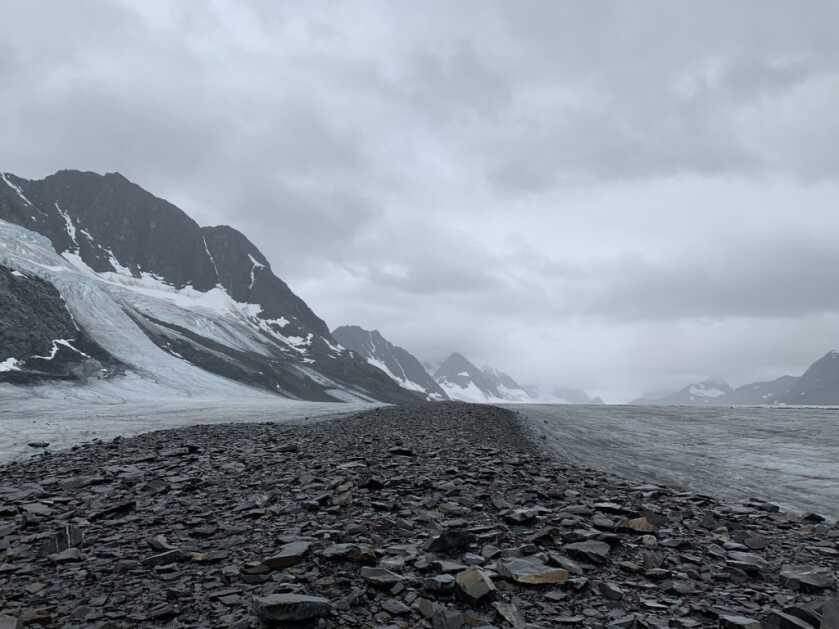
On/In Your Body
Most hunters are familiar with the concept of layering- the process of dressing in clothing layers that can be added and subtracted easily to meet the physical level of exertion. Moisture-wicking fabric like merino wool is my go-to as it can be worn multiple days and drys quickly. For a ten day hunt I’ll pack two extra each of shirts, socks, and underwear and one pair of long johns. This gives me three layers: Base (merino shirt and long johns), Mid (pullover and pants), Outer (puffy coat and pants) to work with for temperature and one additional layer (rain gear) as backup.
Footwear for mountain hunters is where the literal rubber meets the road. I prefer a taller leather upper (8-10” range) and a fairly stiff last in the footbed; I’ve found this helps noticeably when loaded heavy and dropping elevation quickly, sometimes one’s only option. Other hunters I know prefer shorter uppers and a more forgiving last; just like pickups and sports teams, it comes down to personal preference. If you’re shopping for your first pair of mountain hunting boots, take the time to go try some on at a sporting goods store. Many places have small terrain features to try footwear on an incline or simulated trails before purchase and a quick trial run of several pairs may narrow down the field quickly. Regardless of style, buy what fits well and provides the needed amount of support, then get them and your feet broken in months before the actual hunt. Feet can be debilitating on a sheep hunt and must be given their due well in advance to ensure they’re ready for some serious work.

All the skill and equipment in the world won’t help however if you can’t get up the mountain. Feeding your body with appropriate fuel is of utmost importance in sheep country and vital to success if the hunt goes for more than a few days. Though counterintuitive, it can be a struggle to get enough calories as many people’s appetite starts to wane after several days of high exertion. Anticipating and planning for this ahead of time will add some much-needed variety to the food and drink menu to keep things fresh and that appetite up. I like coffee, tang, and tea for additional liquid options and a healthy variety of dinners. Whatever the choice, there’s a plethora of options for backpackers and hunters alike that cater to most diets and preferences. Keep the food and drink flowing even when you’re not hungry and your body will be able to recover and repair faster, allowing you to stay in the game longer and hunt harder.
Miscellaneous-
While these technically might fit in a previous category, here’s a few more items for consideration:
Trekking poles/ice axe- Trekking poles have gained in popularity in the hunting world as mountain hunters have discovered the benefits of them. Using two more contact points allow minor leg muscles a break from supporting a hunter’s whole-body weight as well as more surefootedness on inclines and rocks. Ice axes fill a small but important niche not only as a trekking pole but also an auxiliary tool. I’ve scraped out gravel for tent pads, made channels to divert water around camp, and cut foot holds for hunters across slides with them.
Crampons- Another tool with a small yet no less important niche to fill. Glaciers or snowy and icy inclines can be traversed much more safely with a set strapped to a hunter’s boots, especially with a full pack and tired legs.
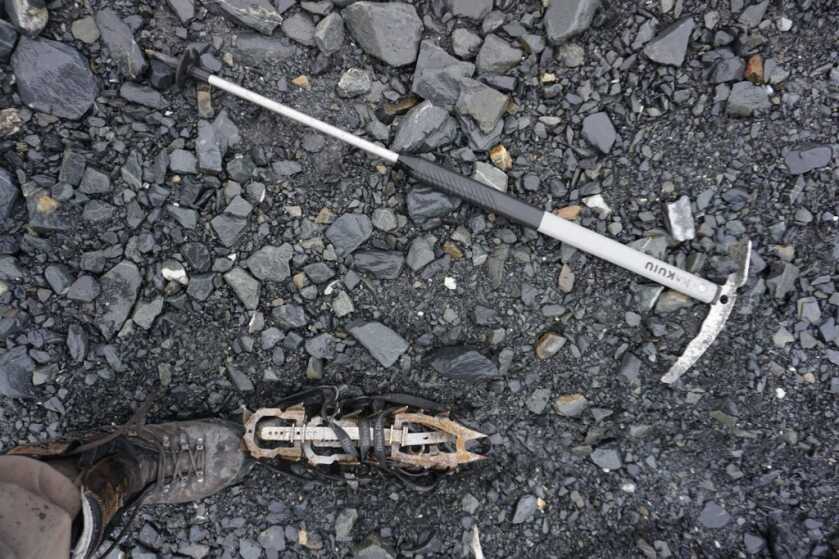
While this series is by no means an attempt at a full-fledged training program and gear dump, it’s intent is to lay the framework and generate discussion. Take what works for your lifestyle and anticipated hunt, mix in your own ideas and research then hit the mountains. I’ll see you in sheep country.

